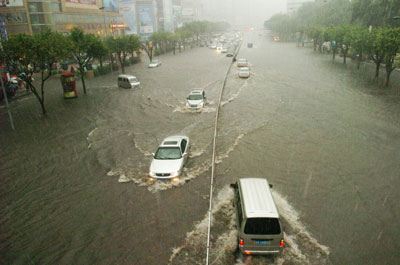As promised, here is my second post of the set treating the different types of extreme events. Today: Extreme precipitation related events.
Warming increases the amount of water vapor in the atmosphere. When this vapor condenses and precipitates => it rains.
So what?
Storms:
 |
An increase of heavy rains and torrential rains is expected (this tendencypage 201 has already been observed in mid-latitudes for the las 50 years) like strong hurricanes and tropical storms (categories 4 and 5), in which an increase of both in intensity and duration since the 70'spage 213 has already been observed. See: Emanuel et al. 2005, Webster et al. 2005 (even though the total number of hurricanes is NOT expected to increase).
Floods:
 |
| Flood events globally between 1985 and 2008 |
Naturally, this increase in extreme precipitation, coupled with rising sea levels, lead to more frequent flooding.
For example, Min et al., 2011. about northern hemisphere:
"Here we show that human-induced increases in greenhouse gases have contributed to the observed intensification of heavy precipitation events found over approximately two-thirds of data covered parts of Northern Hemisphere land areas. [...] Changes in extreme precipitation projected by models, and thus the impacts of future changes in extreme precipitation, may be underestimated because models seem to underestimate the observed increase in heavy precipitation with warming".
Drought:
Although a net increase in precipitation is expected this would occur mainly near the poles and the tropics, while in mid-latitudes precipitation would fall as a result of the expansion of the subtropical high pressure belt (Svoma et al., 2013.)
Still, extreme precipitation would also increase (although less than in places where there is a net increase in precipitation, like the tropics or higher latitudes), since it is expected that the frequency is reduced but the intensity is increased. Warming also increases evaporation, and it is expected that the trend of increase continues in regions affected by drought.
Spain is also particularly vulnerable to this phenomenon region, since precipitation is expected to be reduced by 15-30% in the second half of the century according to the spanish meteorological agency.
"The reduction [of precipitation] in southern Europe is expected to have severe effects, e.g. more frequent droughts, with considerable impacts on agriculture and water resources."
An interesting review about this topic is Dai 2010, which shows that much of the planet is at risk of increasing drought.








